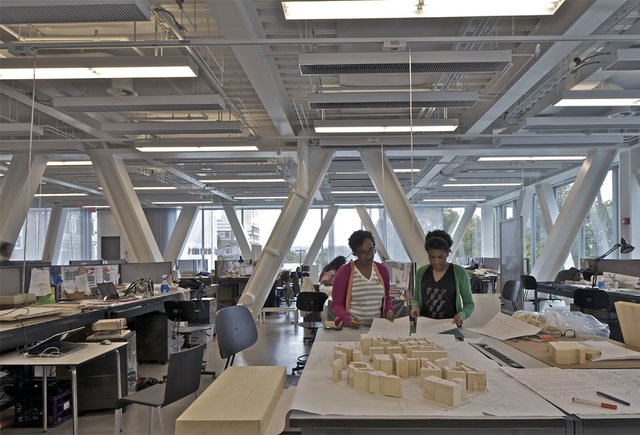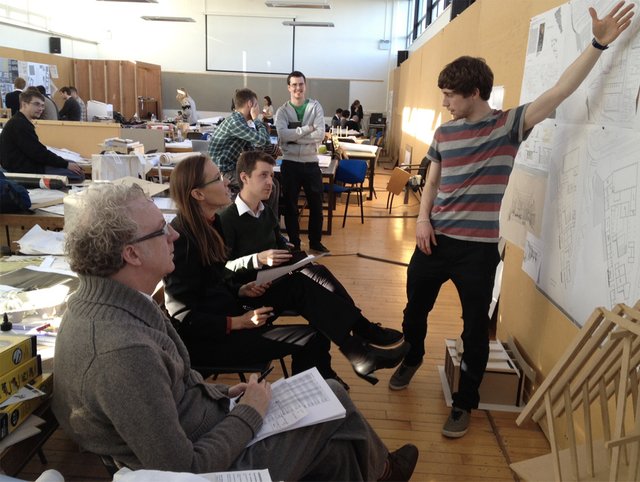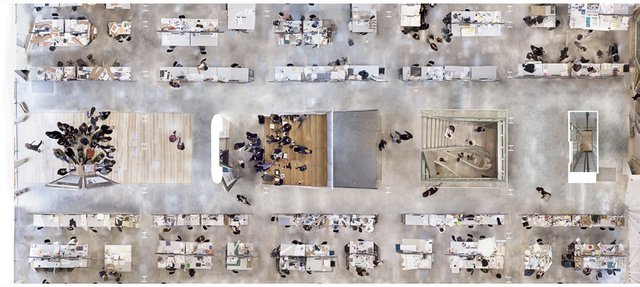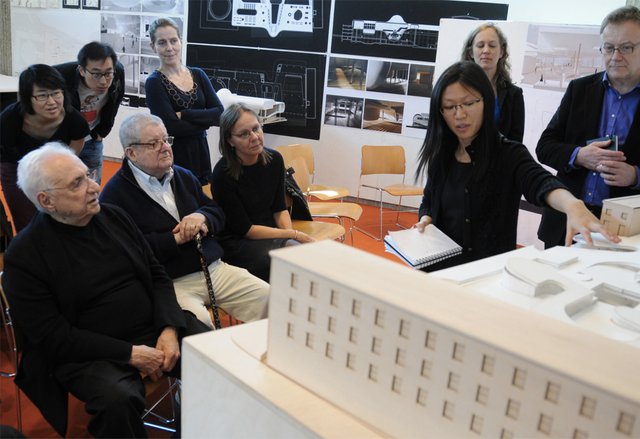Reconsidering Creative Work to Earn More Cultural Value & Relevance. Part 2: Grading System
Yesterday we had a chance to talk about a common professional route for young creatives (you can read it here). Today we'll maintain a focus on the early years of learning and look at how exactly aspiring makers and designers are assessed in university and higher education. It's something quite different than the typical A – F grade and follows a much different “rubric.”
The Critique
For those who have never experienced a studio-based form of education, I'll paint the picture. Instead of the typical 12-18 person university classroom or a grand lecture hall of dozens of students, imagine a large area with big rectangular desks line in rows. Each desk, about 5'x4.5' on average, is occupied by a student. Young designers work at these desks to create drawings, build models, make prototypes, and a slew of other hands-on creative techniques that require a bit more space than the footprint of a computer.

Open Studios of Milstein Hall
Every class or so, an instructor or professor will “critique” the process of a student, either at their desk or at a “pin-up” or “review.” The latter event is when students pin up their ongoing work and ideas to present to a panel of critics. They defend their ideas and discuss them with other professionals from the discipline. This is how we grade art in school and in the office. There are no objective grades, there is no feedback that is reliant on anything other than opinion.

Defending Ideas
Critiquing the Critique
Though it might sound a bit odd, the critique model is one that has been sustained by modern creative education for over a century.

Looking Back at our Alma Mater
Having gone through 7 years of this educational model, you better bet I have at least 2-cents worth to throw at it. Let's begin this deliciously painful process of biting that hand that fed us. Here are the major glaring problems of this model, ones that I believe inhibit the capacity for creatives to effectively integrate their work into the world.
1: The “critique” maintains a bubble (I'm barely trying not to use the word 'incestual') environment. These activities are done primarily for creatives by other creatives. Can you imagine what a world would be like if scientists only worked for other scientists? Or lawyers for other lawyers? Brokers for brokers? When a discipline is too involved with itself, it devolves into an inaccessible pothole of regurgitated ideas and self-gratification. Coming from an architectural background, I can assure you that architects would be embarrassed if people outside the profession heard how we speak and talk lightly about subjects that would affect thousands to millions.
2: The critique model maintains a strong hierarchy of ideas and approval. It boils down to this – people who are older and more “experienced” get exercise dominance over the younger generation. Learning from past extensive experience is invaluable, but it begs the question if relying on the relationship is the best way to garner innovative ideas when established few judge the hopeful and diverse many.
3: There is no objective measurement. The critique is done solely verbally. There is no numerical or fact-based assessment. The entire affair becomes highly dependent on personality and mood as a result. For our disciplines, should we not have some missions and standards for what our work is to achieve?

A Review at Yale with the (In)Famous Frank Gehry
Establishing a More Relevant Assessment System
Any criticism is only half-baked without accompanying solutions. Here are some rough ideas that would make this system more effective in education and practice.
1: Incorporate other disciplinary professionals. Creative work should rarely be solely for the creator him/herself. Any proposed piece of art or building or any other creative piece will eventually affect a general public or at least one sole proprietor. Involving the people potentially impacted by an idea, even if it is purely theoretical, will help tremendously in grounding it in a reality.
2: Move away from top-down assessment. Creative fields pride themselves on taking the off-beaten path, however it is still heavily reliant on a knowledge hierarchy. Instead of having only established professionals speak upon a work and involve others of diverse backgrounds and demographics. Ideas are only good when they are substantiated with meaning and purpose, and those can come from and shared by everyone.
3: Come up with metrics! This is more for the architectural field but can be applied in some ways to others. In many aspects, we should be able to compare projects for their intended impact. “My work does this ______. It can expect to do ______. It is a more compelling idea over others dues to _______ factors.” These sorts of resolutions help orient creative work to achieve a purpose.
There you have it- the explanation, weaknesses, and potential developments of the creative educational system, or at least how we assess it. What do you all think? In what other ways can we evaluate the value of ideas and creative work? Let us know your thoughts in the comments!

I agree with pretty much everything that you said, except I'd like to point out that science is also inbred to a certain extent. Who reviews grant applications? Scientists! Non-scientists look at the overall funding levels for the NSF or the NIH, but not at individual proposals (except when members of Congress mock them for cheap political theatrics). An exception would be the Institutional Review Boards that focus on ethical treatment of experimental subjects. Those are required to have at least one community member who's not a scientist.
https://en.wikipedia.org/wiki/Institutional_review_board
Thank you for this! You're absolutely right, this happens in many disciplines that have a peer-reviewed structure. Science is a great example where there should a healthier momentum for sharing work... and also to explain their work in more digestible terms. I'm thinking of a few different abstracts on papers that turn people away with overly worded introductions.
World Domination! You have the right ideas. Let's make it work.
Viva la Steemit Revolución!!
First, Michael, this is such a great sentence - "When a discipline is too involved with itself, it devolves into an inaccessible pothole of regurgitated ideas and self-gratification."
HA. Yikes. Completely. Okay, also, I want to agree in broad strokes but also note that the critique can vary greatly depending on the school. (Regarding #1) For studios I've been involved in - we've always made a point to invite a melting pot of backgrounds and disciplines so that the students received a "real-life" blend of honest feedback. Some of the most valuable insight didn't come from an architect at all... but from small-business owners / residents who knew exactly how a proposal would effect them. But you're right, it's a big (and seemingly obvious problem) the edu-bubbles need to break down...
Yes this is a great clarification. The criticism is definitely a blanket statement on the status-quo of creative education but there are definitely some programs and teaching professionals who are actively doing awesome things (worthy of a post next week!). Unfortunately, these seem to remain as outliers and not standards of how the field operates. How can a local community project stack up to a 300-story skyscraper/floating ski-slope/multi helipad/bungee jumping proposal for Dubai? I think this is why I'm so interested in the basic workings of early creative education for how it implicitly orients us.